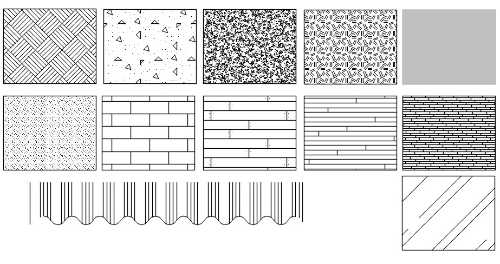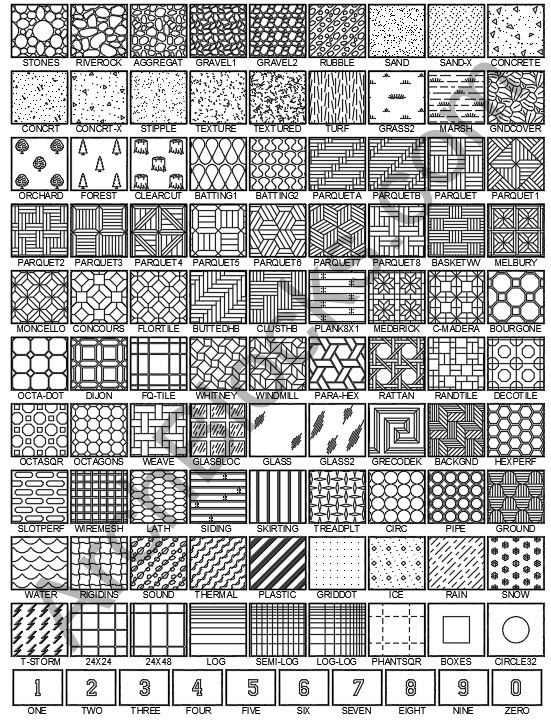


There are also dwg files for mimic hatching and various roofing solutions. Once 'installed' with the command ' hatch ' you will find many models for every need. I went through checking them out a while back, and added comments at their individual pages about things like whether the loops touch or not, what kind of input you have to give it, some drawbacks to a few of them, etc., etc. AutoCAD hatches Order by: Name (A-Z) 1-10by13 In this category are hatch files for AutoCAD (.pat). If you Search further for "insulation" just on that Cadalyst CAD Tips website, there are several other routines for Polyline results. Be sure to look at the image in my first comment there - it's pretty juicy, and even works along curved paths. My favorite is my own InsulBattPoly.lsp, available here. If, on the other hand, you actually want a squiggly Polyline end result, rather than a Hatch pattern or via AutoCAD's Batting linetype, there are a variety of routines that will do that. pat files of any Coronado Stone profile to create seamless patterns in Autocad and Revit. That pattern is defined at 100 drawing units "high" per row of squiggles, so use a scale of the thickness divided by 100. If you mean you want a single row of that pattern, such as to show insulation in a wall, you can do it with some care about the boundary, scale and origin, and of course the rotation angle when the wall direction isn't horizontal. Yes, you can do that with the Hatch pattern.


 0 kommentar(er)
0 kommentar(er)
